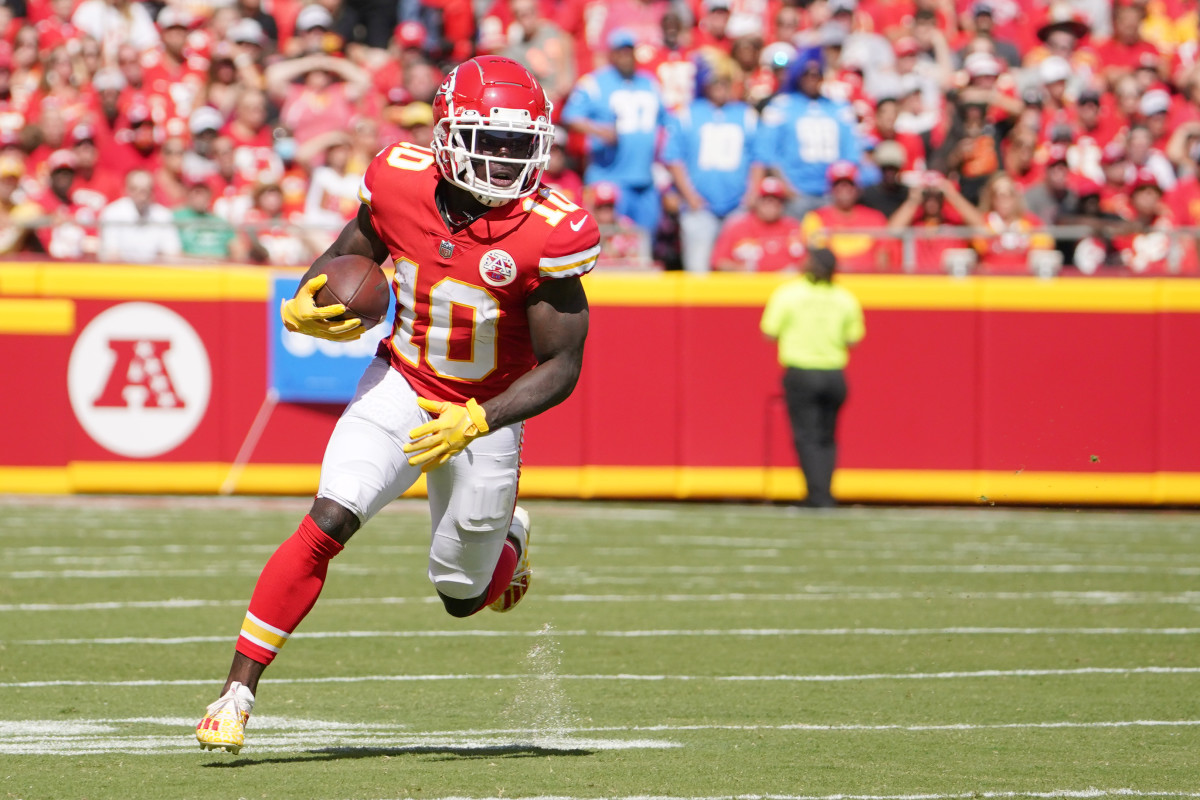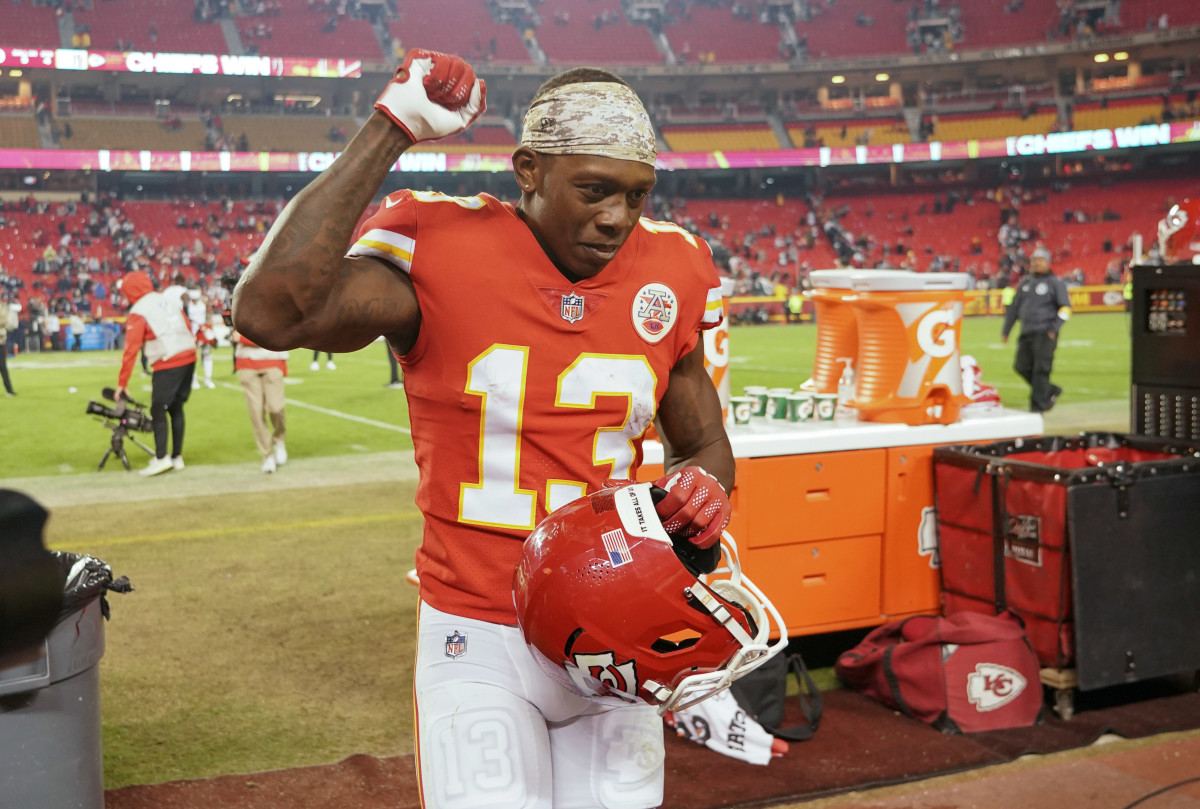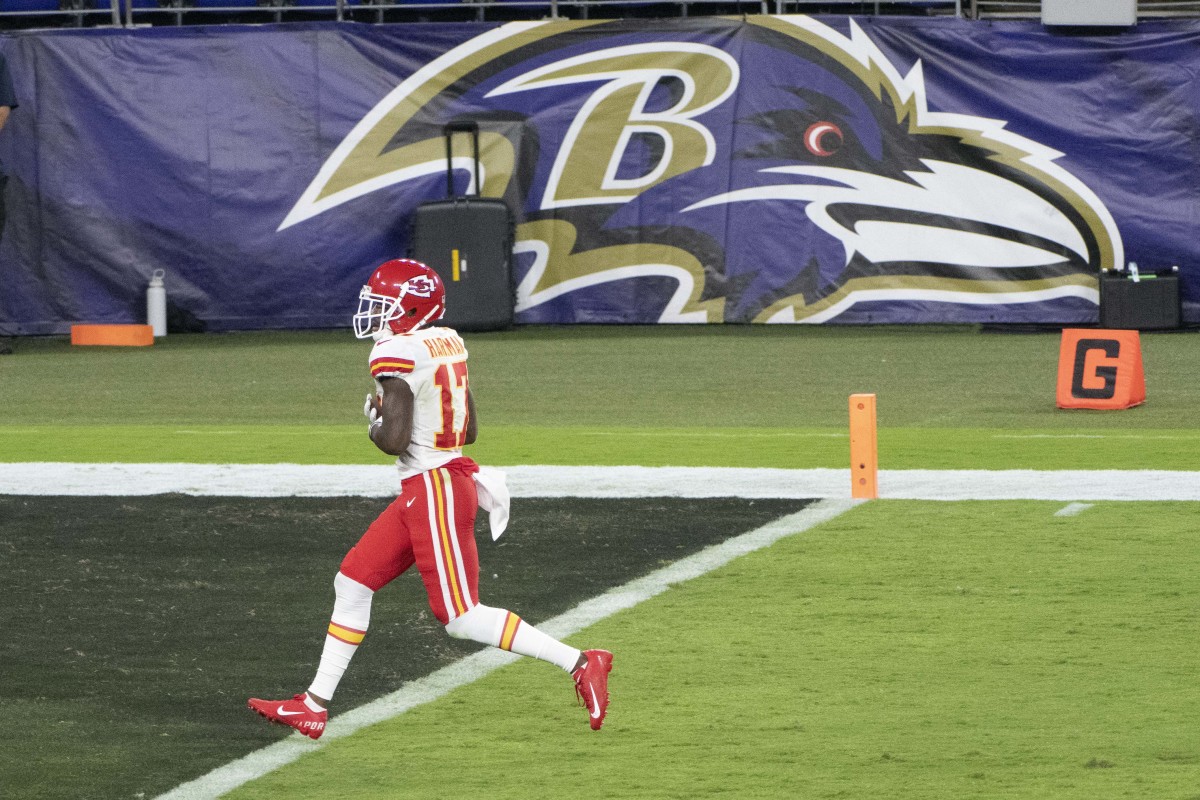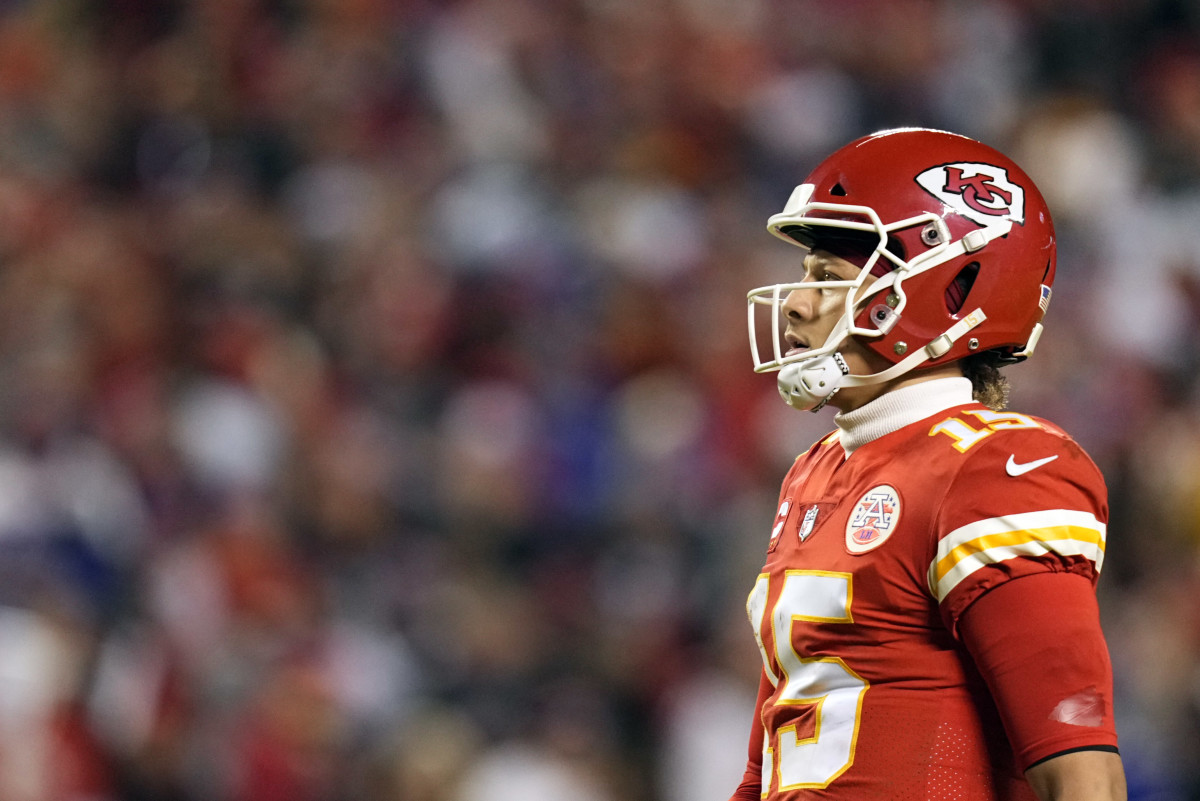Who is Patrick Mahomes Without Tyreek Hill? Better Than You Think
In a press conference during his first season as the Kansas City Chiefs defensive coordinator, Steve Spagnuolo took a brief moment to reflect. He reflected on what it was like to be on the other side — the “headaches,” as he called them — that came with scheming a defensive plan for Tyreek Hill and Andy Reid-guided offense. In joining Patrick Mahomes to create the NFL’s most explosive QB-WR combination, Hill quickly became the type of player in which a double team became less of a suggestion and more of a requirement, as Spagnuolo recalled.
"Just do the math," Spagnuolo said. "You'd like to spy somebody on the quarterback and you'd like to double [Hill]. So you start adding it up and who's left to cover all the other receivers?"

It’s a question the Chiefs never needed to answer, until now, following the blockbuster trade that sent the six-time Pro Bowler to the Miami Dolphins. The Chiefs’ wide receiver room figures to look tons different in 2022-23, thus prompting another thought: Without the league’s most potent deep threat, the onus shifts further onto Mahomes. Is there anything worth learning from the four-game stretch in 2019, when Hill was recovering from a sternoclavicular joint injury to his shoulder?
On a name-by-name basis, the Chiefs’ receiving core is much more “respected” than “feared,” as it would have been in past years. But Mahomes’s play over that four-game stanza, sample size considered, does make one feel a bit more optimistic about what the upcoming season could foretell. Here’s a look at the overall numbers (thread):
Went back to watch Patrick Mahomes and the Chiefs’ four-game stretch w/ out Tyreek Hill from the 2019 SB run, and it’s got me feeling a bit better about the Dolphins trade.
— Marlow Ferguson Jr. (@meloferg) March 29, 2022
For those interested, put together a few quick thoughts / clips on that below. ⬇ pic.twitter.com/13n6c9Stfu
For what it’s worth, those four teams the Chiefs faced shared a combined 31-32-1 record. With that said, those games work strongly in the favor of those who advocate for the Hill trade and what it provides the Chiefs with contractually in the short and long-term.
Consider this: In Week 1 — a game Hill could only play 18 percent of the snaps in — teammate Sammy Watkins exploded for the greatest outing of his career. The nine-catch, 198-yard, three-touchdown masterpiece made him the hottest commodity in all of football (or in Fantasy Football, at the very least).
The very next week? Demarcus Robinson, dubbed by Reid as a “star in the making” according to the CBS broadcasters, promptly laid a six-catch, 172-yard, two-touchdown performance in a 28-10 rout. Judging by Robinson’s new team, it’s very possible that the Las Vegas Raiders, three years and a whole new city later, never forgot about that game. Three weeks after Robinson's explosion? Byron Pringle, just five weeks into his NFL career, stops by for his first and only 100-yard game.

All of that is worthy of a smile, especially when you remember how that 2019-20 season ended. It’d likely even be a tad more noteworthy if even one of Robinson, Pringle or Watkins were on this year’s team. Most encouraging of all: With all of those aforementioned performances going on at once, a rookie wide receiver named Mecole Hardman was quietly churning along, working big play after big play in his heightened role. Over that stretch, Hardman’s four-game sample would have read like this over a 17-game season: 51 catches, 1,046 yards, eight touchdowns.
Considering potential winners in all of this, Hardman feels like one. As noted previously, he hasn’t been reticent in giving his thoughts on more touches, and there are numbers that work in his favor without Hill (albeit the sample size isn’t much to be bullish about). He’s been quietly productive, along the lines of a WR2-type despite being third and sometimes further down on the totem pole.
There’s another step for him to take, be it his chemistry with Mahomes, more week-to-week consistency, or making the most of his experience edge in this year’s depth chart. A pivotal part of the Chiefs’ offense is having speed that clears out or occupies safeties from different spots on the field. In developing Hill early in his career, former wide receivers coach David Culley perhaps said it best: “The good ones see one safety, but the great ones see the whole field.” It should be fascinating to see where Hardman evolves in year four.

The one caveat? Even without Hill over that four-game sample size, the Chiefs were able to cultivate those game-breaking, deep threat plays with the snap of a finger. Maybe you’ve noticed, maybe you haven’t, but the two-high safety shells are being used at a higher-than-ever frequency, especially against the Chiefs. In the good old days — 2019, in this instance — take note of how often the Chiefs were able to shred zero blitzes and single-high safeties. It’s just not there as frequently in 2022. For that reason, it made for an interesting note when looking at Mahomes’s statistics.
Mahomes’s intended air yards per pass attempt:
- 2019, Week 2 vs. Raiders — 12.7
- 2019, Week 3 vs. Ravens — 8.8
- 2019, Week 4 vs. Lions — 12.0
- 2019 season overall — 8.8
- 2021 season overall — 7.3
Again, consider the sample size. But, Mahomes was, in some cases, more aggressive and decisive without his most lethal weapon. In losing Hill, it’s possible Mahomes has to pivot to that: being a more cerebral quarterback. This year’s receiving group brings hyphens and possibility in abundance, from JuJu Smith-Schuster and Marquez Valdes-Scantling to potentially more receiving opportunities for a player like Clyde Edwards-Helaire.
In any case, it puts heightened expectations on everyone. From the new receivers, to Reid and Eric Bieniemy and their ability to scheme players open, all the way down to the man under center. But if anyone is capable of making it work, there’s likely nobody better suited for it than No. 15.

